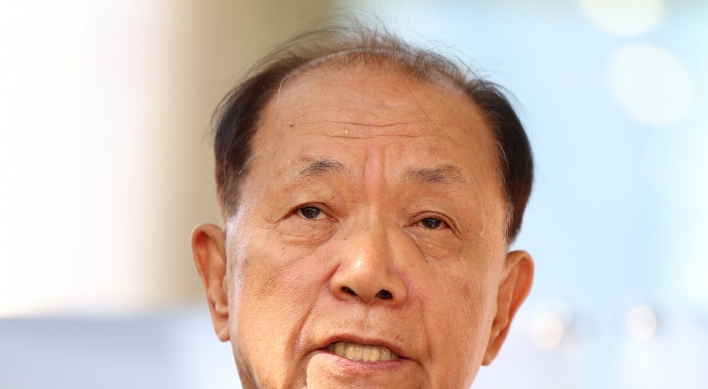LG Electronics CEO and vice chairman Koo Bon-joon and Daimler chairman Dieter Zetsche met at the International Consumer Electronics Show in Las Vegas last week in the latest move to expand their ties.
Given Mercedes-Benz’s recent push for driverless cars, industry watchers said automated systems for vehicles were likely the key topic of the meeting on Jan. 6.
“We have discussed ways to further expand ties between us,” Koo, the LG chief, told reporters after the one-hour meeting made at the CES exhibition hall.
Given Mercedes-Benz’s recent push for driverless cars, industry watchers said automated systems for vehicles were likely the key topic of the meeting on Jan. 6.
“We have discussed ways to further expand ties between us,” Koo, the LG chief, told reporters after the one-hour meeting made at the CES exhibition hall.

“We are also talking with other global carmakers. It has been almost 10 years since we started developing navigation systems for cars and the business is now on track. We will seek more opportunities in other automotive component businesses.”
The Daimler chairman also hinted after the meeting that the German auto giant had keen intention to use components made by LG for its future driverless cars, according to news reports.

The high-profile meeting between the two top executives came when the CES, the world’s largest gadget show, attracted a slew of carmakers that showed off a new paradigm of driving, especially autonomous driving.
During the show, Mercedes-Benz unveiled the F 015 luxury sedan concept that can be operated autonomously or manually.
Equipped with a spacious cabin and lounge-like seating for four, the chairs can be rotated to allow face-to-face conversations in fully driverless mode.
LG, Korea’s second-largest tech giant, has already jumped on Daimler’s self-driving bandwagon. The company recently inked a deal with Mercedes-Benz to develop a stereo camera system, which works like a “human eye” to detect objects on the road ahead.
Key features of the system include computational stereoscopic vision and sensors that enable driverless cars to gather traffic information, identify hazards such as accidents and activate the automobile’s safety systems.
By Lee Ji-yoon (jylee@heraldcorp.com)
-
Articles by Korea Herald






![[KH Explains] No more 'Michael' at Kakao Games](http://res.heraldm.com/phpwas/restmb_idxmake.php?idx=644&simg=/content/image/2024/04/28/20240428050183_0.jpg&u=20240428180321)












![[Herald Interview] Mistakes turn into blessings in street performance, director says](http://res.heraldm.com/phpwas/restmb_idxmake.php?idx=652&simg=/content/image/2024/04/28/20240428050150_0.jpg&u=20240428174656)
